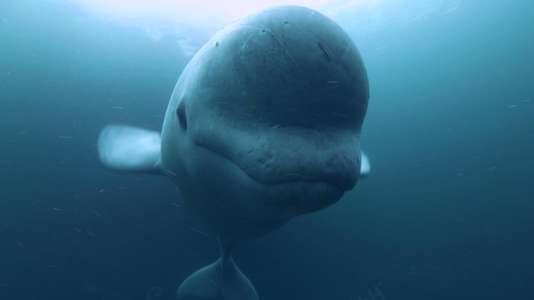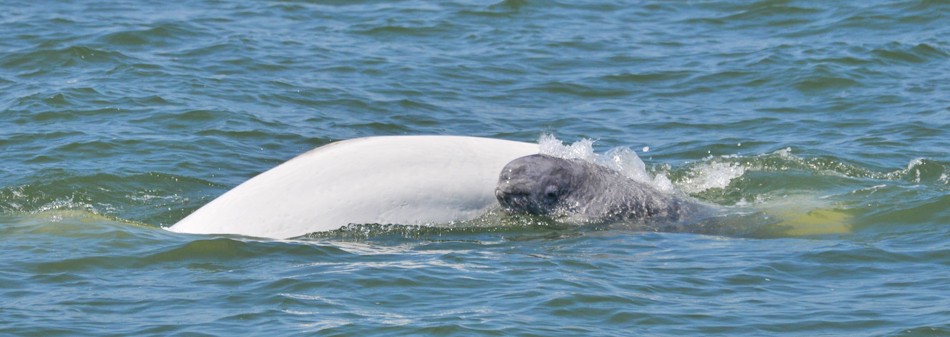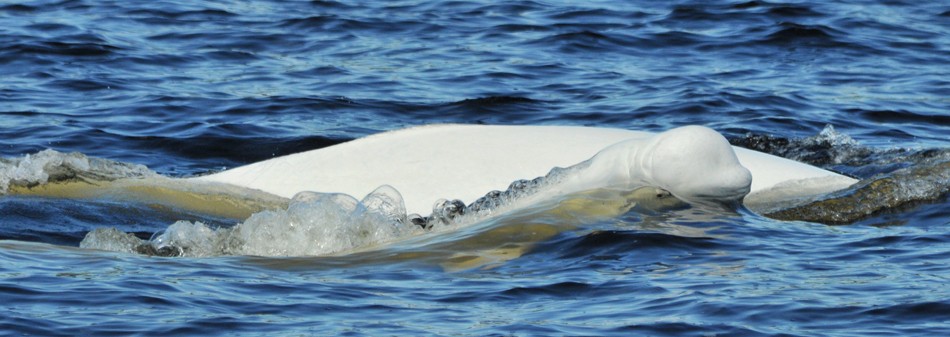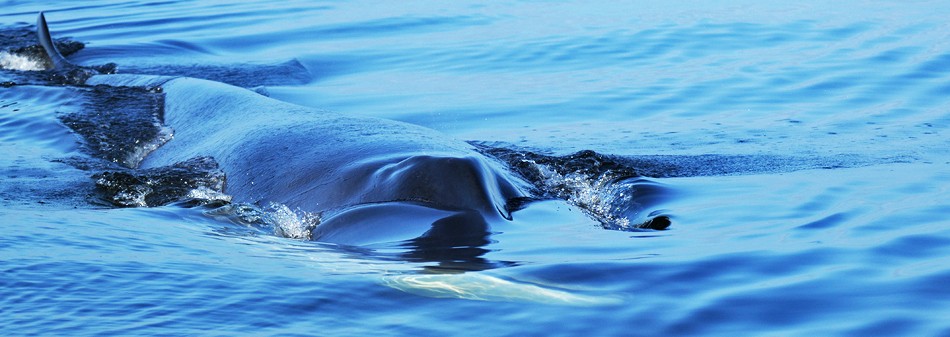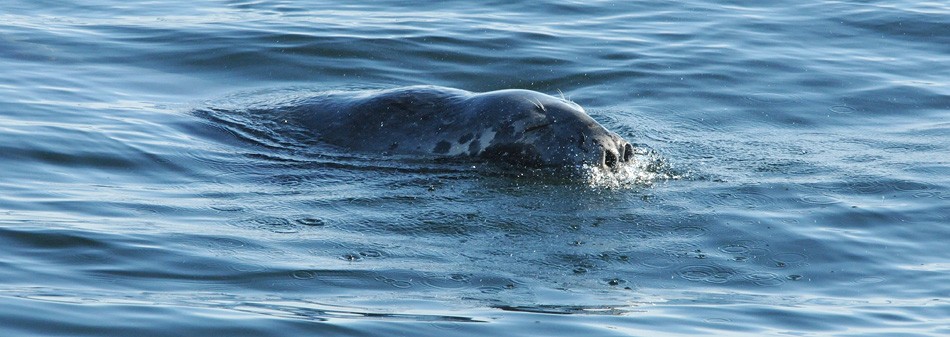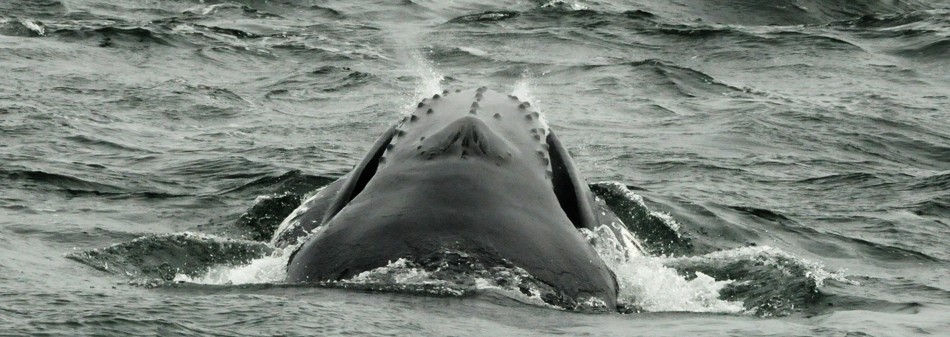11/07/2015
With the Belugas: Week of June 29, 2015
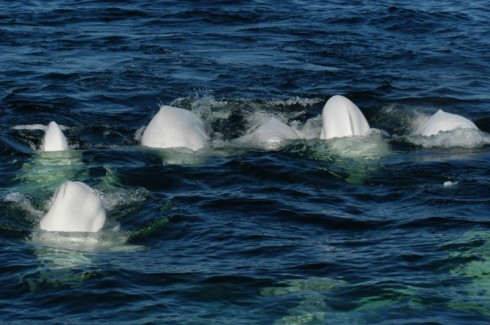
The field season for the St. Lawrence beluga behavioural study is under way. The first week consisted of three days for a total of 15 hours at sea and six hours observing belugas. Accompanied by inclement weather which lasted the entire three days (fog, wind, waves, rain), we travelled up the Saguenay Fjord from its mouth to Baie Sainte-Marguerite. When offshore conditions are compromised by heavy fog and strong winds, the weather is generally calmer in the Saguenay, which allows us to sample this sector, which is every bit as important for belugas. We therefore take advantage of this tendency to explore the Fjord. We also visited the waters south of Île Rouge, in the middle of the Estuary off Tadoussac. During the week, we observed a high percentage of “grays”, i.e. juveniles that are not yet completely white. At birth, beluga calves are light brown. In their second year they turn blue-gray (known as a “bleuvet” in French) and will fade in colour with age. The transition from gray to white occurs between 12 and 16 years. We also saw several females with young, with herd sizes ranging from 2-20 individuals. The majority of individuals were dynamic and directional in their movements; in other words, they were en route to a fixed point, without stopping along the way.
July 1, 11:00 am: We encounter an old acquaintance dating back to 1998. It is a female, Pacalou, and her “bleuvet”. In the same group, we also observe Miss Frontenac, her oldest daughter who is now about 11 years old, and who is also accompanied by her second-year young. Mother and daughter are both simultaneously “moms”. They swam up the Saguenay Fjord, from Anse à la Boule to Îles Coquarts.
July, 3:00 pm: We explore Baie Sainte-Marguerite, a restricted area where the belugas spend several hours, including a great deal of time surveying the surface and swimming in circles. We observe a group of about twenty individuals. They are highly active and are moving about quickly, making it difficult to count the number of adults and young. We take a few quick snapshots. Among them, we spot a familiar individual: Blanche, a female first identified in 2001, who is over 25 years old and who has recently been adopted by the municipality of Tadoussac.
July 3: We observe a group of about a dozen individuals south of Île Rouge that are zipping back and forth in every direction. When this type of behaviour is observed, it is almost always in this sector. Perhaps they are taking advantage of the shallow waters to feed, but on what kind of prey is anyone’s guess.
In short, some of the stars observed this week include Pacalou, Miss Frontenac, Blanche and DL1050.
 The Bleuvet is a boat belonging to the GREMM. It is dedicated to the long-term research program on St. Lawrence belugas
The Bleuvet is a boat belonging to the GREMM. It is dedicated to the long-term research program on St. Lawrence belugas


